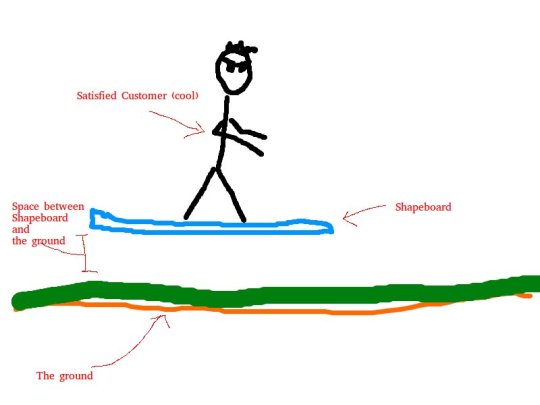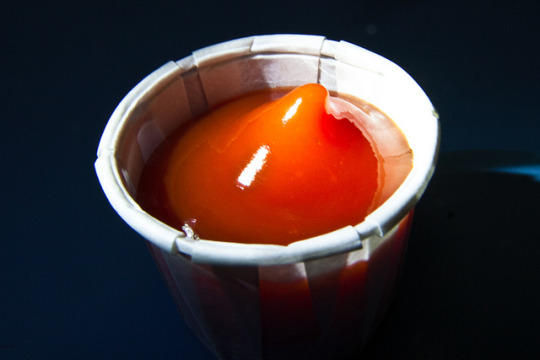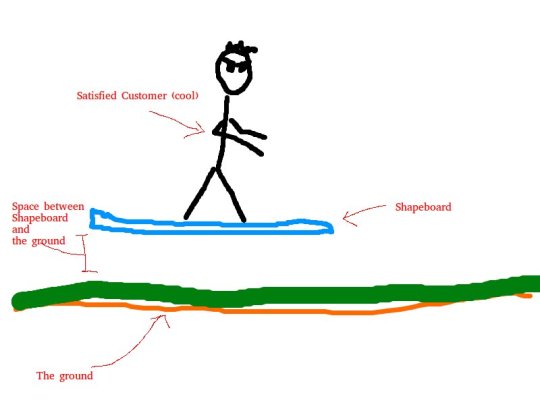
This post originally appeared on the Shapeways blog.
This is the fourth in a series of posts about different types of rights that could be involved with models and files here at Shapeways. Today we’re talking about trademarks.

Without a trademark it can be hard to tell if this ketchup will be tasty or free of poison. Image: flickr user Steven Depolo.
Imagine walking into the dystopian store of your nightmares to buy ketchup. The store is selling ketchup in three different bottles that look like they come from different places, but none of the bottles have any labels. You look at the three bottles, unable to figure out which one will taste the way you expect (and also not make you sick). Finally, motivated by an eerie sense that you are running out of time, you grab a bottle at random and hope for the best.
A few hours later, all of your friends arrive at your BBQ. If your ketchup choice turns out to be wrong, you can blame the lack of trademarks in your nightmare store.

While both cards include the “Local 44” trademark, only one of them really comes from the bar. Can you spot the counterfeit? Image: Flickr user Travis Goodspeed.
Trademarks are words, names, and symbols that serve to identify the source of a product. Fundamentally, trademarks are about consumer protection: when you see ketchup with a trademark on it, you should be confident that the company who owns the trademark stands behind that ketchup. If someone else is passing off their own ketchup labeled with a brand name that you trust (a behavior known as counterfeiting), you might buy it expecting one thing only to discover later that it is quite another.
Because of this consumer protection role, spotting trademark infringement is a bit different than spotting, say, copyright infringement. In disputes about copyright infringement, the core question is “did the defendant make a copy?” In disputes about trademark infringement, the core question is “is the use of the mark likely to cause confusion?”
There are plenty of uses of a trademark that can constitute trademark infringement. But there are also many ways to use a trademark without permission that are perfectly legal. The “likelihood of confusion” test is at the core of classifying any given use. The more likely a use is to suggest that the good is associated with a trademark holder, the more likely it is to be infringement. Conversely, the less likely a use is to suggest that the good is associated with a trademark holder, the less likely it is to be infringement. While using (or “copying”) the trademark is part of that analysis, it is far from the final question.
Enter ShapeBoard

Preliminary artist’s rendering of ShapeBoard.
In order to illustrate how this would work, imagine that Shapeways has just rolled out a hoverboard that we are calling the ShapeBoard. (Note that I’m not saying that we are working on a hoverboard. I’m also not not saying that we are working on a hoverboard.) Assuming you did not have permission from us, how could you use our ShapeBoard trademark?

Preliminary artist’s rendering of the ShapeBoard logo. Note that Shapeways could have a trademark on both the word “Shapeboard” and the specific appearance of the world Shapeboard in the logo.
In thinking through these examples of potential uses, it may be helpful to keep this three part test in mind. This test originally came from a case involving The New Kids on the Block because, well, why not? Although this is a United States-based test, many other countries treat trademarks similarly.
- Do you need to use the trademark in order to identify what you are talking about?
- Are you only using as much of the trademark as is reasonably necessary to identify what you are talking about?
- Are you avoiding any suggestion that the trademark holder is sponsoring or endorsing what you are doing?
Talking about ShapeBoard. This might be obvious, so I’ll get it out of the way early. You don’t need Shapeways’ permission to talk about ShapeBoard. You can say or write “SO excited about ShapeBoard!” or “My ShapeBoard is coming tomorrow!” (or, I suppose, “Meh, ShapeBoard”) without getting the permission of Shapeways. This makes common sense and it also makes sense in the context of those three tests. It would be pretty hard to talk about the ShapeBoard without using the word “ShapeBoard” and you need to use the entire word “ShapeBoard” in order to do so. Finally, saying that you are excited about ShapeBoard does not imply that you are working with Shapeways or that Shapeways is endorsing you.
Comparing ShapeBoard to things. You also don’t need Shapeways’ permission to compare ShapeBoard to things. Let’s say you are coming out with your own hoverboard. You can say that “YouBoard is 20% cheaper than ShapeBoard” or that “YouBoard comes in 5 fewer colors than ShapeBoard” without infringing on the ShapeBoard trademark. Again, this makes sense in the context of the test – you are only using ShapeBoard to the extent necessary to make the comparison and nothing you say suggests an association between you and ShapeBoard.
Talking about ShapeBoard compatibility. Instead of launching a rival hoverboard, you decide to get into the ShapeBoard accessory business (no offense to the YouBoard, but if the ShapeBoard exists it is pretty awesome so it is probably better to hop on the bandwagon). You roll out a line of 3D printed ShapeBoard fins, ShapeBoard bumpers, and ShapeBoard hover-mechanism-tuners. What is the best way to talk about them? Obviously, you are going to need to use the term “ShapeBoard.” After all, it would be pretty hard to explain to people that you are offering fins for the ShapeBoard without using the term “ShapeBoard.”
But don’t forget about the third part of the test. You want to avoid suggesting that your fins, bumpers, and hover-mechanism-tuners come from Shapeways because Shapeways is not endorsing them. That’s where clear terms like “ShapeBoard compatible” or “works with ShapeBoard” can come in. They avoid creating confusion among customers while still making it clear that your stuff works with ShapeBoard.
Disclaimers. Disclaimers can also be useful for addressing the third part of the test. Adding language to the description of your ShapeBoard compatible fins that clearly states that they are not affiliated in any way with ShapeBoard or Shapeways, and that the term ShapeBoard is used for comparison purposes only, can help get you on the right side of that part of the test. Remember, if you really are using the term ShapeBoard in good faith (as opposed to trying to trick customers into thinking that your fins came from Shapeways), this type of disclaimer should be easy to write.
If you are conscientious, there are many legitimate ways to use trademarks even if you don’t have permission from the trademark owner. The important thing to remember is to avoid suggesting any sort of association or endorsement from that trademark owner. That being said, these types of rules tend to be highly fact and context specific. This blog post is not a substitute for legal advice, and if you have a specific question you should consider consulting an attorney. If you would like more information about using trademarks, the Digital Media Law Project has a good overview on using the trademarks of others (although it is no longer being updated it provides some great foundational information). The International Trademark Association also has good information with international examples.